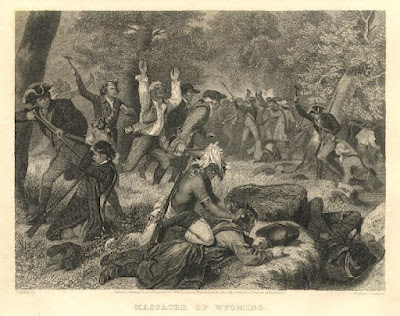© 2022 Christy K Robinson
In my family tree, I have numerous lines of Quaker Friends. But this story is about the ones that got away. They were disfellowshipped from their Quaker congregation.
Henry Willetts and Charity Willson were members of the Muddy Creek Meeting from 1785 in what is now High Point, North Carolina. Previously, they’d been members in good standing of the (Quaker) Friends Meeting at Kingwood, New Jersey. Charity’s parents and grandparents were members of the New Jersey Friends.
 |
| Jemima Jane Willetts, colorized |
Jemima Jane Willetts was born on December 20, 1787, to Charity, age 38, and Henry Willetts, age 38. Jemima was the eleventh of 14 children.
Birth of son
Her son David was born on March 22, 1813, in Stokes County, North Carolina, when Jemima was 25 years old. Did Jemima have an affair with a married man? Was she assaulted? She obviously wasn’t able to marry the father of her baby.
Friends Meeting censure
In June 1813, Muddy Creek Monthly Women's Meeting records show that Jemima Willets was accused of misconduct for "having a child in an unwed state." She was dismissed from membership there--disowned.
It looks like two of her brothers were dismissed from the Meeting at other times, for misconduct. The reasons are not publicly recorded.
Jemima’s father Henry made a will that was probated in 1816, leaving about 500 acres and a house to two of his sons and his wife Charity, along with horses and tack, blacksmith tools, and household goods. The residue of his estate was divided equally between his daughters, including the unwed Jemima (good for him!).
Leaving the South
(The 1820 US Census has a Henry Willetts and five white family members, plus two young enslaved women and four enslaved children under 14 years of age, living in Brunswick, North Carolina (far to the south) and engaged in agriculture. I can’t see Quakers as slave owners, and Henry was probably dead, so this is probably a different Henry Willetts.)
Charity and most of her adult children moved to Geauga County, Ohio in about 1820, but records show that Charity died that year.
In 1823 in Ohio, Jemima married the Irishman and recent United States Army veteran Alexander Harper; they had three children together. At this time, Jemima’s eight-year-old son David became a Harper, and his numerous descendants have believed him a Harper for 200 years. But it appears that David Harper was never a Quaker: his wife was the daughter of three generations of clergymen of Dutch descent, and David and his wife were buried in the churchyard of their Methodist church near Peoria, Illinois.  |
David Harper and wife
Christenah Vanover,
colorized. |
Jemima’s husband, Alexander Harper, died after 25 years of marriage, and she married Andrew King, a twice-widowed father of six adult children, on December 21, 1850, in Peoria, Illinois. Andrew King died after 20 years of marriage to Jemima, and she went back to using her previous married name, Harper. She died on February 17, 1877, in Hanna, Illinois, at the age of 89 years. She, her two husbands, and her son and daughter-in-law are buried in the same churchyard, probably with other children and step-children.
One of David Willett-Harper’s many children, Maria Elizabeth Harper (see another post about her HERE), was my great-great grandmother. Her son was a carriage painter and finisher, like his step-grandfather Alexander Harper.  |
Maria Elizabeth Harper Stone,
holding my grandmother,
Lois Elizabeth Stone, in about 1914. |
I was showing photos to my second cousin, a descendant of Maria, David, and Jemima. When she saw Jemima’s plain black dress and bonnet, she laughed. “She doesn’t look at all like a Quaker!” (meaning that Jemima looked exactly like a 19th-century Quaker).
********************
Christy K Robinson is author of these books (click the colored title):
And of these sites:
Discovering Love (inspiration and service)
Rooting for Ancestors (history and genealogy)
William and Mary Barrett Dyer (17th century culture and history of England and New England)





























